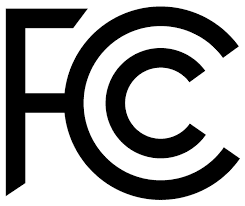Introduction to FCC Certification
FCC Certification is a mandatory approval process regulated by the Federal Communications Commission (FCC) in the United States. Any device that emits radiofrequency (RF) energy—such as wireless routers, smartphones, laptops, Bluetooth devices, and other electronic equipment—must comply with FCC regulations before being marketed or sold in the U.S.
The certification ensures that a product does not cause harmful interference to other devices and operates within the permissible electromagnetic spectrum limits. This process is essential for maintaining public safety, telecommunication reliability, and radio spectrum efficiency.
Understanding the Role of the Federal Communications Commission
The Federal Communications Commission (FCC) is an independent U.S. government agency responsible for regulating interstate and international communications by radio, television, wire, satellite, and cable.
One of its key functions is to prevent harmful radiofrequency interference between electronic devices. To achieve this, the FCC has developed a framework of technical standards and testing procedures that manufacturers must follow to obtain certification.
Why FCC Certification Matters
FCC Certification is not merely a legal requirement—it’s a mark of technical credibility and consumer trust. Products that carry the FCC logo demonstrate compliance with safety and performance standards, providing reassurance to distributors, retailers, and end-users.
Key Benefits of FCC Certification
- Legal Market Access: Required for selling or importing RF devices in the United States.
- Reduced Interference Risks: Ensures the product operates without disrupting other communication systems.
- Enhanced Product Credibility: Certified products gain a competitive advantage in the market.
- Global Recognition: Often accepted or referenced by other international regulatory bodies.
Types of FCC Authorization
The FCC employs three main authorization procedures depending on the type of equipment and its potential for interference:
1. Certification
This is the most stringent level of approval.
It applies to products like transmitters, mobile phones, and Wi-Fi devices. Testing must be performed by an FCC-recognized Telecommunications Certification Body (TCB). Once approved, the product receives a unique FCC ID that must be displayed on the device and its packaging.
2. Supplier’s Declaration of Conformity (SDoC)
Under this method, the manufacturer or importer tests the product in an accredited lab to verify compliance with FCC standards. The results are documented, and the responsible party must ensure that all supporting technical information is available upon request.
3. Verification (Legacy Method)
This older method is now largely replaced by the SDoC process. It was previously used for simple electronic devices that did not intentionally emit RF energy.
Devices Requiring FCC Certification
FCC certification is necessary for intentional and unintentional radiators:
Intentional Radiators
Devices that intentionally emit RF energy to communicate or function.
Examples:
- Bluetooth devices
- Wi-Fi routers
- RF transmitters
- Remote controls
- Smartphones
Unintentional Radiators
Devices that generate RF energy as a byproduct of their operation.
Examples:
- Computers
- LED displays
- Power adapters
- Audio systems
Both categories must undergo EMC (Electromagnetic Compatibility) and RF testing to ensure compliance.
The FCC Certification Process
1. Product Evaluation
The process starts with identifying applicable FCC rules (e.g., Part 15, Part 18, or Part 22) based on the device’s functionality and frequency range.
2. Testing
Testing is conducted in an FCC-accredited laboratory to measure parameters like:
- Radiated emissions
- Conducted emissions
- Spurious emissions
- Frequency stability
- RF exposure levels
3. Documentation Preparation
The manufacturer or testing agency prepares the technical file, which typically includes:
- Product description
- Test reports
- Block diagrams
- Schematics
- User manuals
- Labeling information
4. Filing with a TCB
The complete documentation is submitted to a Telecommunications Certification Body, which reviews the results and issues the FCC Grant of Equipment Authorization.
5. Labeling and Record Keeping
Once certified, the product must display the FCC ID and comply with the labeling requirements outlined in FCC Part 2.925. All records should be retained for at least two years after the product ceases production.
FCC ID and Labeling Requirements
Each certified product receives a unique FCC ID, composed of two elements:
- Grantee Code: Assigned to the manufacturer by the FCC.
- Product Code: Assigned by the manufacturer to identify the specific model.
Example: FCC ID: ABC12345XYZ
This ID helps users and regulators verify certification status through the FCC’s online database.
The label must be permanently affixed, legible, and visible on the device’s exterior or within the user manual if the product is too small.
Penalties for Non-Compliance
Failure to comply with FCC regulations can result in serious consequences:
- Product recalls or market bans
- Fines exceeding $150,000 per violation
- Reputational damage
- Import restrictions and legal actions
Therefore, obtaining proper certification before market entry is both a legal and commercial necessity.
Global Implications of FCC Certification
Although FCC Certification is a U.S.-specific regulation, it often serves as a benchmark for international compliance. Many countries refer to FCC standards when formulating their own radio frequency and EMC regulations.
Hence, achieving FCC compliance can streamline global market access, especially when combined with certifications such as CE (Europe), IC (Canada), and MIC (Japan).
Conclusion
FCC Certification is more than a regulatory formality—it’s a cornerstone of safe, reliable, and interference-free communication in modern technology. For manufacturers, importers, and distributors, understanding and adhering to FCC requirements ensures smooth market entry, consumer trust, and regulatory compliance.
By investing in proper testing and documentation, companies not only protect themselves from penalties but also contribute to a more efficient and interference-free communications ecosystem in the United States and beyond.





